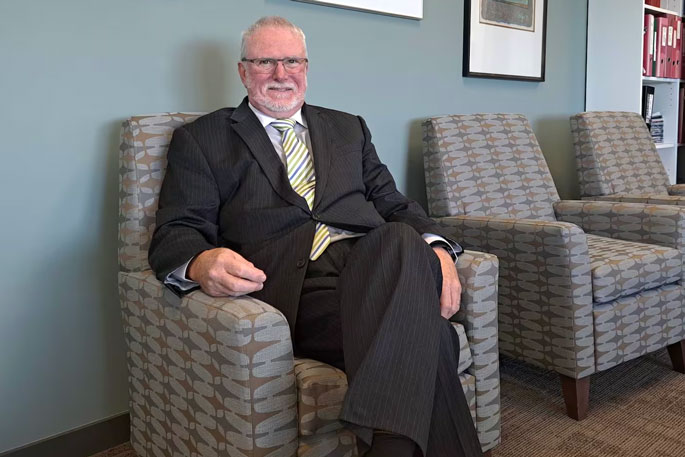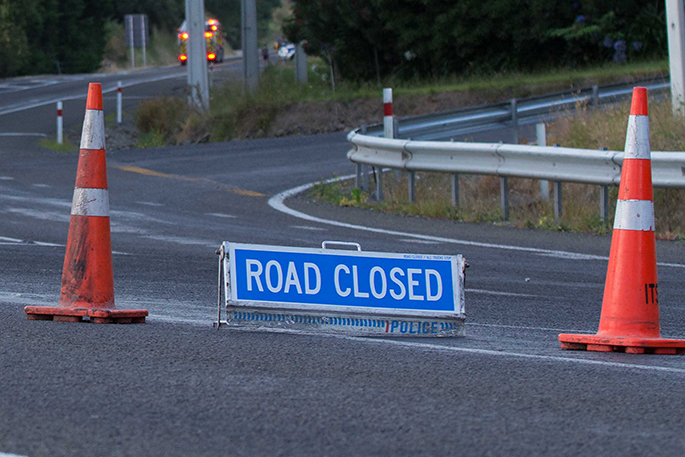“They were racing down the road and the car was totalled, there are two kids lying in the middle of the road.”
Those are the words of a driver who, after two cars sped past her late one night, continued around a bend to discover a catastrophic crash.
She called 111 and told the operator it appeared the cars had been racing before one lost control.
“The car is smoking a bit. It’s blocking the road, it’s in the middle of the road. Two people were thrown from the car.”
The manner of a teenager’s driving has been at the centre of a Youth Court trial in Tauranga this week after a high-speed crash killed a teenage boy and injured others.
While the driver of the car that crashed has already been dealt with by the courts after pleading guilty to a charge of manslaughter, the Crown says the driver of a second car is also at fault.
It’s alleged he also drove dangerously – by speeding and racing – and this contributed to the crash.
More specific details about both drivers and where and when the crash happened cannot be published because statutory suppressions apply to media coverage of the Youth Court.
It’s now up to Judge Christopher Harding to determine if the Crown has proved the teenager’s driving was dangerous, and that this contributed “materially” to the other vehicle’s crash, which killed the teenage passenger.
The witnesses
A man who was behind the wheel of a Toyota Hilux, gave evidence that the road was quiet on State Highway 29A near Mount Maunganui when a car came up behind him.
It was late at night, with minimal lighting on the 100km/h stretch of highway, and the man said he was taken aback as a car sped past.
“A vehicle went by me quite rapidly, so, so fast that it actually buffeted my car,” he said.
“It was enough to surprise me given I hadn’t long checked my rear-vision mirror.”
After it passed him, he saw the car start to lose control, before briefly “coming back into line”.
“But then the car fish-tailed again, and I thought he’d hit the centre barrier because of the way it came back straight across in front of my car, at such an angle... My immediate thoughts were ‘how am I going to stay out of this?’.”
He said the car then hit a tree line and was “launched” out, ending up back in the middle of the road.
The Hilux driver told the court he saw two objects flung from the vehicle and he slowed down.
“I realised what was lying in the road was another person and I thought, ‘if I don’t do something, I’m going to run him over’.”
He managed to stop on the left-hand shoulder.
The person was a teenager who was thrown from the car and pronounced dead at the scene.
 Judge Christopher Harding. Photo / Sandra Conchie.
Judge Christopher Harding. Photo / Sandra Conchie.
Driving side-by-side
The court also heard from a passenger who was in the car with the driver who is now on trial.
He told the court the friends had been hanging out all evening and were heading to another boy’s place when the crash happened.
The two cars had been driving close to each other for most of the journey.
He said the cars had not been racing, however.
He wasn’t sure about specific speeds as he “wasn’t the driver and wasn’t really looking at his speed”.
He did remember that the car that crashed, had undertaken them before they saw it go on to overtake the Hilux.
He described seeing the crash shortly after – he thought the car he was in may have been almost next to the Hilux at that point.
The car looked as though it swerved to the right and then “lost control left as he tried to correct it”.
It had then “spun out” and “hit the trees and grass”.
He said he stopped and “went to check on the boys”.
He stayed at the scene to talk to police, while the driver went to the hospital.
The court also heard from a police crash investigator and a forensic engineer, who accepted the vehicles had been speeding. However, the police investigator said there were too many variables to estimate speed.
There was CCTV in the lead-up to the stretch of road where the crash happened but a 2.2km stretch had no CCTV, so it was impossible to know for certain the speed and behaviours of the drivers immediately before the crash.
Both experts agree that the contributing factors of the crash included the speed at which the crashed car had been travelling – more than 140km/h and possibly as high as 170km/h – that it had an under-inflated space-saver tyre instead of its normal tyre, the level of alcohol the driver had consumed, and the inexperience of the driver – who was on his learner licence.
The question was, however: did the other driver’s speed contribute to the way the car behaved before the crash?
‘Clear evidence of excessive speed’
With a judge-alone trial, it is up to the judge to assess the evidence and decide whether the Crown has proved its case.
The Judge addressed prosecutor Sunny Teki-Clark and said the Crown case seemed to be that the pair drove dangerously from a pedestrian crossing in Mount Maunganui.
“That involved, on behalf of this young man, acceleration beyond what was reasonable, speeding by 13-odd ks an hour above the limit along the coast route, and then fast acceleration and speeding away from the Baypark roundabout, to the point of about 130km/hour.”
The Crown said there appeared to be attempts to pass and block passing, which indicated racing behaviour.
The Judge said the Crown had to prove was that there was dangerous driving, and then whether it contributed in a material way to the death and injury that resulted from the crash.
Teki-Clark said the Crown didn’t have to prove dangerous driving was the sole cause but that it was a contributing cause.
“The circumstances of [the defendant’s] driving have to be viewed in its entirety,” he said.
“The evidence suggests that [the two drivers] were engaged in a contest of speed, well above a level that was safe.”
He said there were characteristics of street racing and a contest of speed.
Both vehicles had passed another car shortly before the crash.
“To that extent, [the defendant] has contributed to the speed and manner of [the crashed car’s] driving.”
Defence lawyer Rachael Adams said it was not established beyond reasonable doubt that the driving was dangerous.
She said it accepted there was clear evidence of excessive speed, and acceleration of the defendant at two points, but both had been where the speed limit increased, including to the open road.
More was needed to establish “danger”, she said.
“In my submission, no conclusions can be drawn as to the reasons for those periods of acceleration or even the excessive speed.”
All of the causative factors related to the other driver – speed, alcohol and the under-inflated space-saver tyre.
“There was a high degree of negligence on his part, and the defence position is that it’s his fault, and his fault alone.”
She said there was no clear evidence of racing or competitive driving, nor that the defendant’s driving had been in response to the other driver or was intended to influence him.
“This is not a situation as we often see, sir, of young people egging each other on with yelling, hand signals, cameras on their phone; there’s no evidence of any discussion or any interaction.”
While both experts had conceded that peer influence could be a “possible factor”, it hadn’t reached the level of causation beyond reasonable doubt.
The driver of the crashed car had made “appalling” and “tragic” decisions of his own.
Judge Harding has reserved his decision.





0 comments
Leave a Comment
You must be logged in to make a comment.